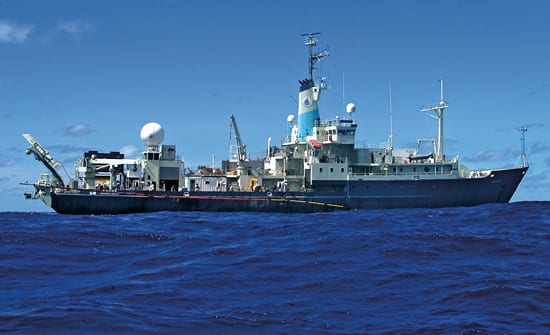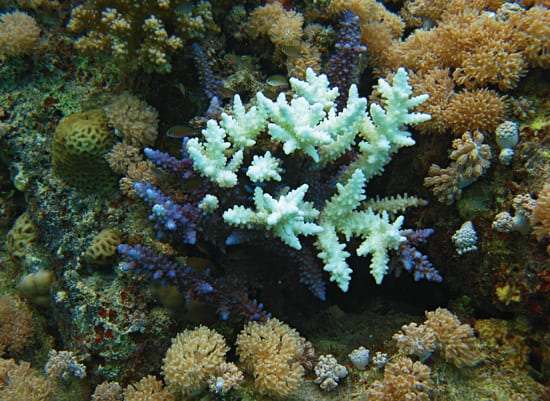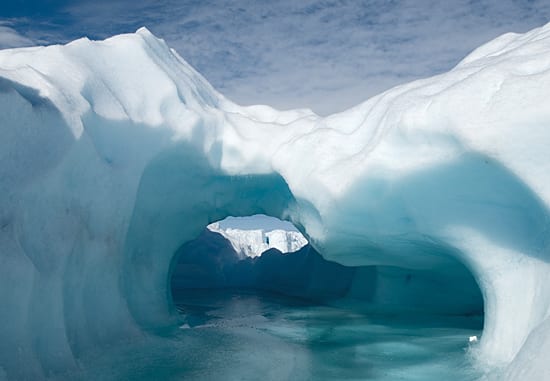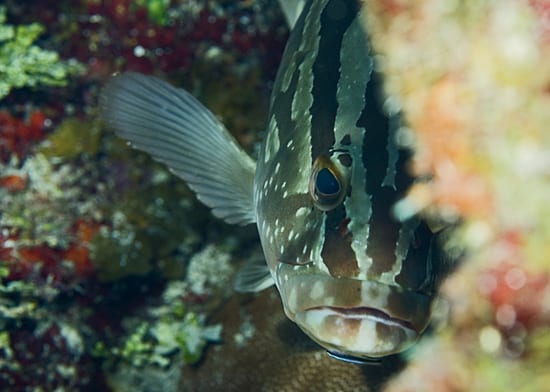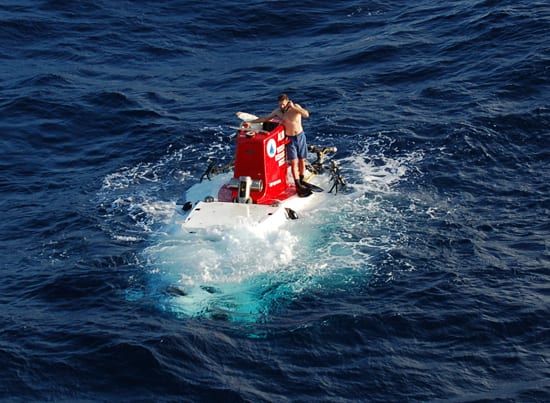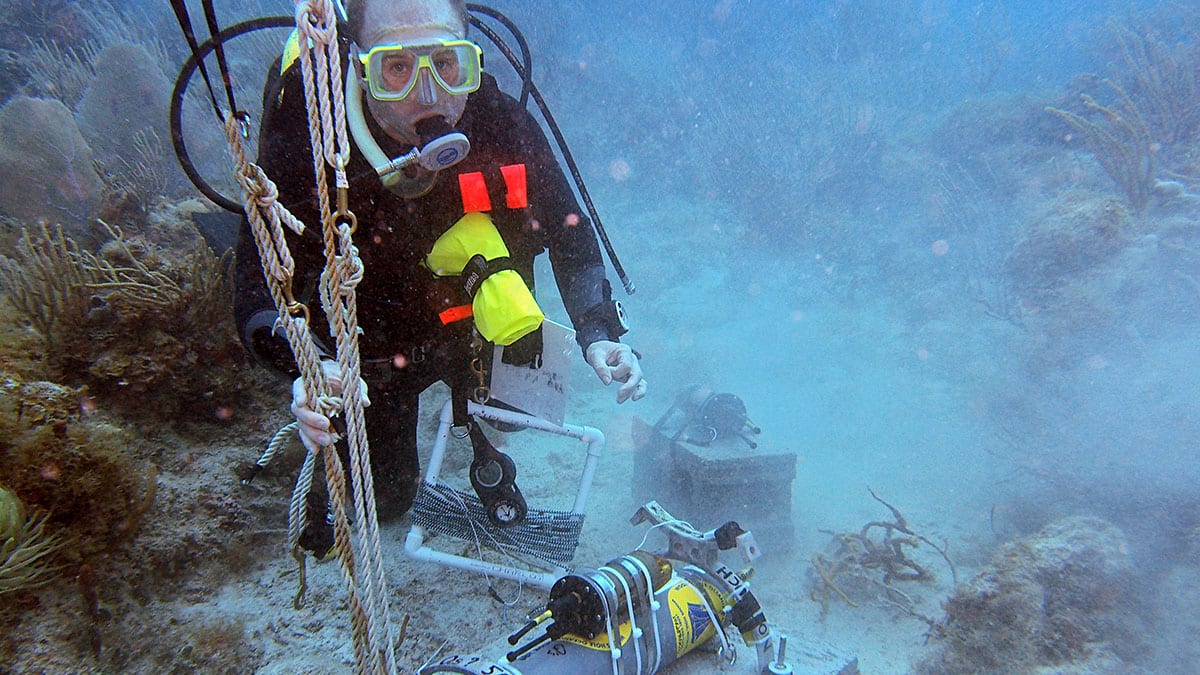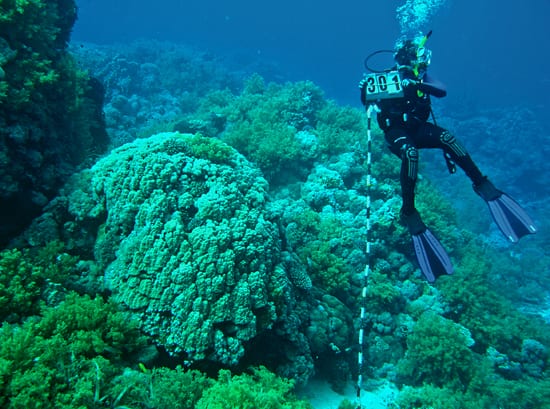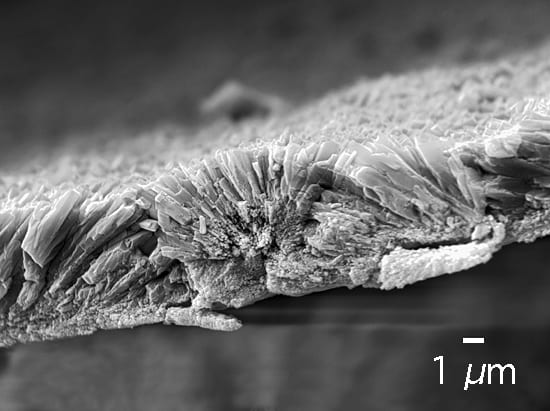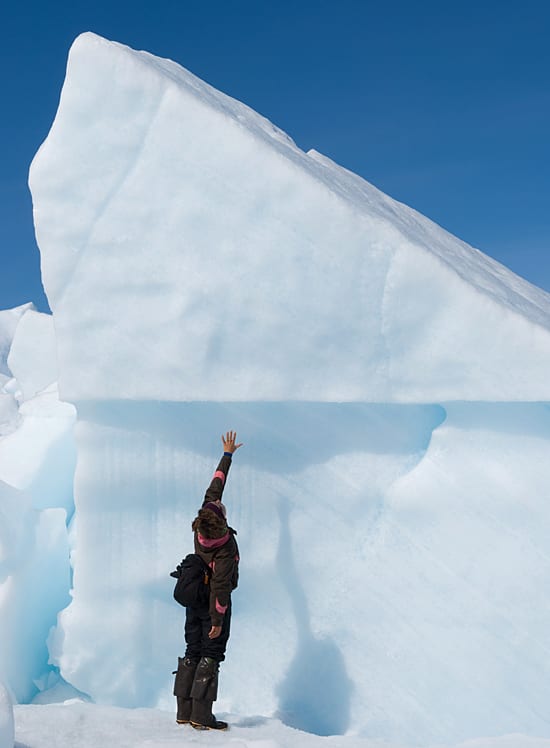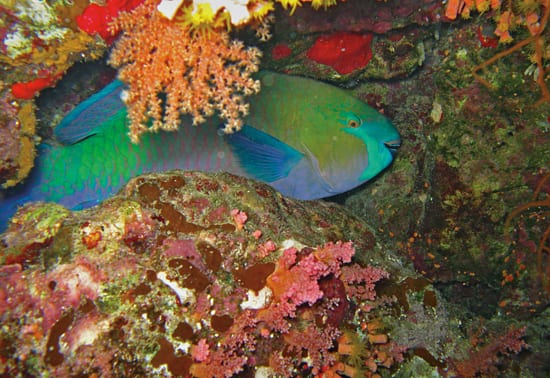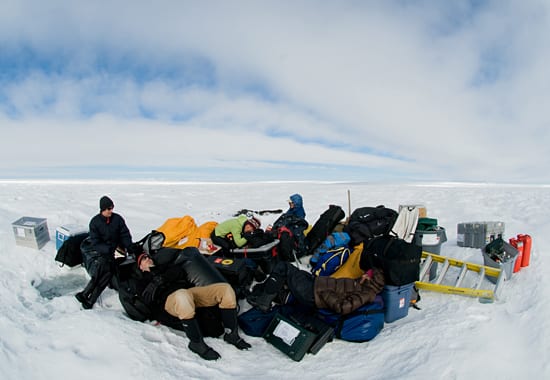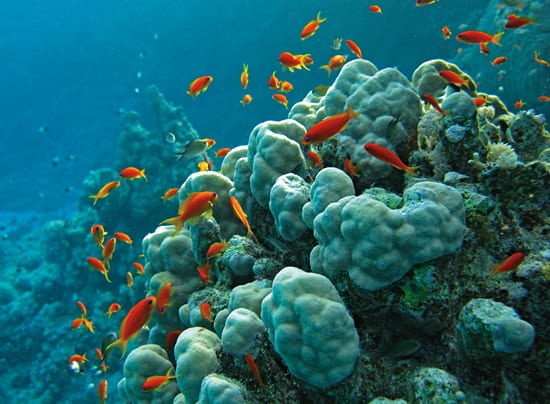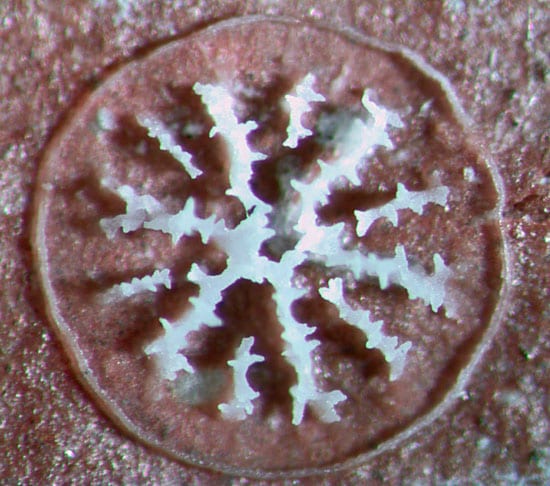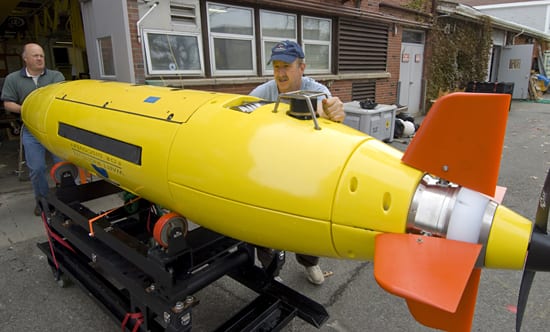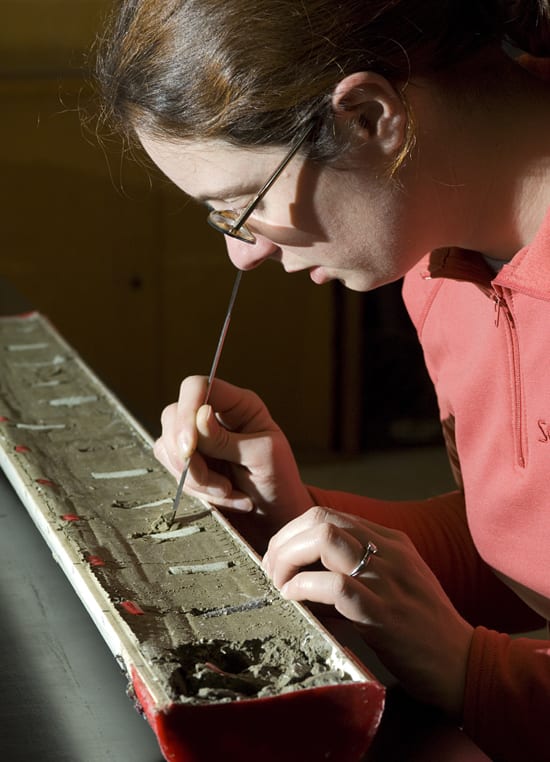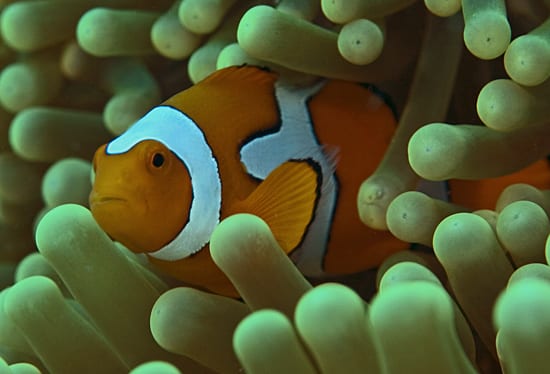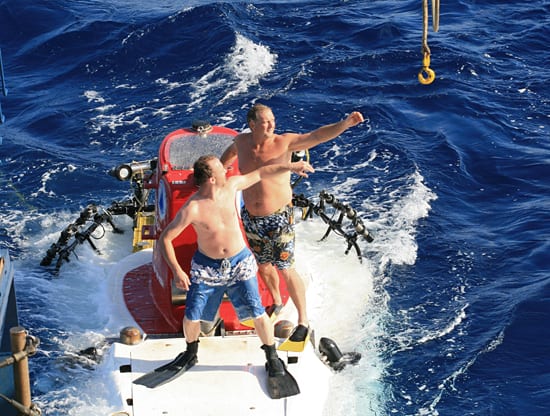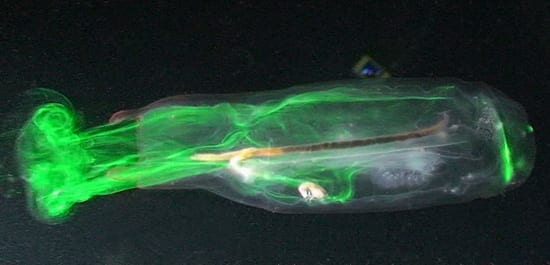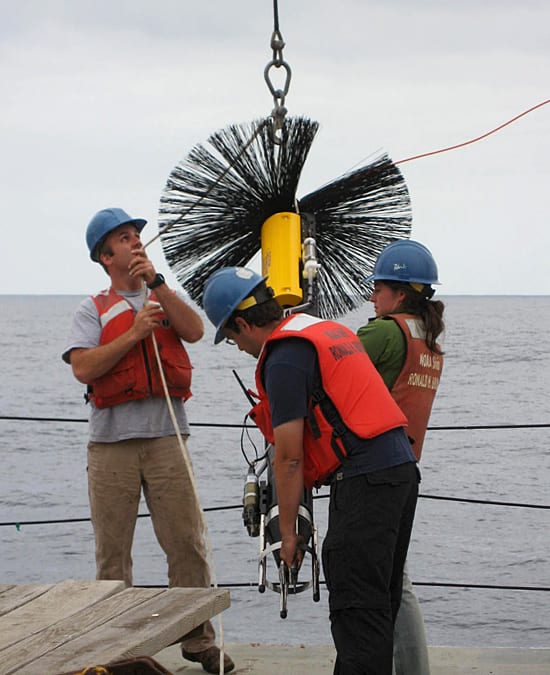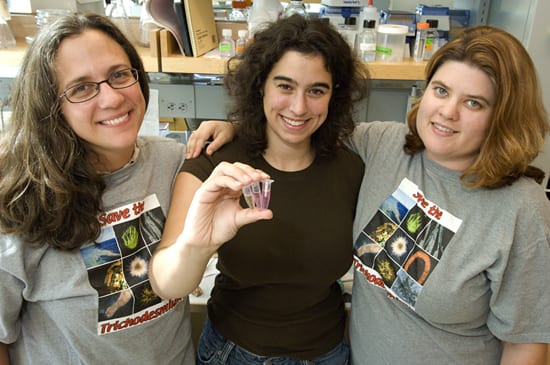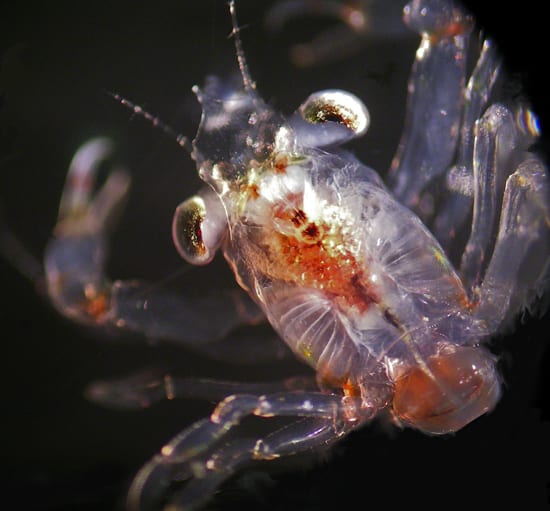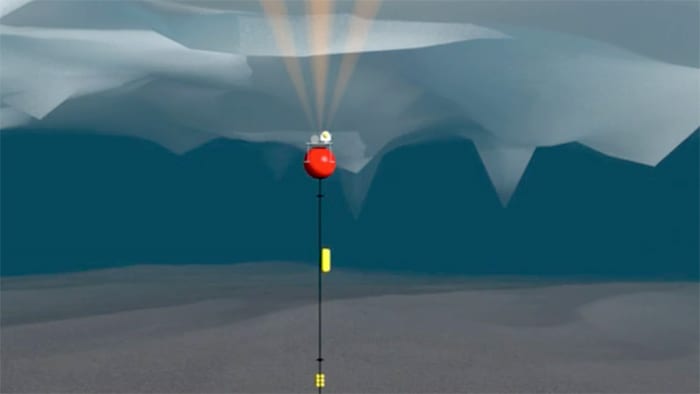Multimedia Items
A very long corer
In 2007, WHOI geologists retrieved the first sediment cores with the newly installed “long-corer” on the research vessel Knorr. Bill Curry, Jim Broda, and several WHOI colleagues conceived and built…
Read MoreWhen corals bleach
Coral’s colors come from symbiotic algae cells living inside individual corals, or polyps. This “bleached” coral has expelled much of its algae in response to the stress of unusually warm…
Read MoreOnce a lake, now a canyon
WHOI researchers took a 40 minute hike from their camp on Greenland’s ice sheet this summer to this lake bed (full, it measured more than 3 kilometers in diameter). An astounding…
Read MorePeek-a-boo grouper
A Nassau grouper (Epinephelus striatus) peeks out from his hiding place along Glover’s Reef in Belize. These large fish have a breeding behavior that makes them especially vulnerable to overfishing…
Read MoreReady for a lift?
Alvin breaks the surface and engineering assistant Mike McCarthy talks to the pilot in preparation for recovery operations after a LADDER III project dive to a hydrothermal vent site in…
Read MoreBiology Photo Highlights
Measuring corals in the Red Sea
Through a research agreement with King Abdullah University of Science and Technology, WHOI scientists are studying coral reef ecosystems, fisheries, and water circulation along Saudi Arabia’s Red Sea coast. The…
Read MoreCrystals from corals
Seen under a microscope, tiny crystals of aragonite (a form of the mineral calcium carbonate) are carefully organized into a “dissepimental sheet” in the skeleton of a Porites coral. Corals…
Read MoreReaching for the high water mark
Until it drained, the depth of this lake on Greenland’s ice sheet reached seven feet (the day before this photo was taken, the spot where University of Washington graduate student Kristin…
Read MoreFood by day, shelter at night
At night, illuminated by the photographer’s flash, a brilliant 18-inch-long parrotfish hides in a niche surrounded by equally brilliant corals in the Red Sea. In daylight, parrotfishes feed on coral,…
Read MoreWaiting for a ride
After dismantling six sleeping tents, a cook tent, and packing instruments and gear, WHOI and University of Washington scientists (who had spent weeks working on Greenland’s ice sheet) waited for…
Read MoreRed Sea reef
Reef-building corals create habitats for many other organisms. The corals reefs of the Red Sea are highly diverse and unique in the world, providing shelter and sustenance for abundant fishes…
Read MoreA new star
New skeleton made by an eight-day old baby “golfball coral” reared in an experimental aquarium at the Bermuda Institute for Ocean Sciences forms a star-shape. The ongoing experiment is part…
Read MoreReady to roll
Members of the REMUS 6000 Operations Group Stephen Murphy (right) and Mark Dennett (left) roll out one of two newly-built Hydroid REMUS 6000 Autonomous Underwater Vehicles (AUVs) for transport to…
Read MoreMud, shells, and monsoons
Joint Program student Fern Gibbons scoops thin slices of mud from a long sediment core taken from the sea floor. Rinsing the mud samples through a sieve releases tiny fossil…
Read MoreHunting for eddies
“Hunting for eddies—this is effectively what we are doing with this instrument,” said Fiammetta Straneo, a researcher at Woods Hole Oceanographic Institution. This month, Straneo’s team is looking for eddies that…
Read MoreHome on the reef
An orange clownfish (Amphiprion percula) peeks out from the protection of sea anemones on a reef in Kimbe Bay, Papua New Guinea. Clownfish are the focal species in ongoing research…
Read MoreGive ’em the hook
Following a June 2008 dive off the west coast of Mexico, Alvin technician Jeff McDonald and Atlantis’ steward Carl Wood reach for the submersible’s tail line in preparation for “recovery”…
Read MoreWorking around the clock
Entries in the log mark the scientific work that continues day and night on an oceanographic cruise. During a recent cruise aboard the R/V Oceanus that WHOI scientist Phoebe Lam participated in,…
Read MoreJet-propelled Jelly
The image above shows a “jet wake” produced by a salp (also called a pelagic tunicate), a relatively common gelatinous animal in oceanic waters. Salps swim by jet propulsion, drawing…
Read MoreLooking to the ocean for cloud clues
Woods Hole Oceanographic Institution researchers Carlos Moffat and Sean Whelan, along with University of Hawaii graduate student Rebecca Simpson, deploy an instrument this month that they hope will shed light on the…
Read MoreTeam Tricho
MIT/WHOI Joint Program graduate students Annette Hynes, Elizabeth Orchard, and Phoebe Dreux Chappell make up the trio known as “Team Tricho.” Working in the microbial biogeochemistry group at WHOI, the…
Read MoreAlong for the Ride
This juvenile crab was hitching a ride inside the barrel-shaped body of a transparent, gelatinous pelagic tunicate collected at the Liquid Jungle Lab in Panama. Pelagic tunicates, or salps, are…
Read MoreArctic Winch
The Arctic Winch is a small buoyant float (white) attached to the mooring’s red top-float. It carries instruments to measure temperature, pressure, and salinity of waters near the ice-infested surface.…
Read More
